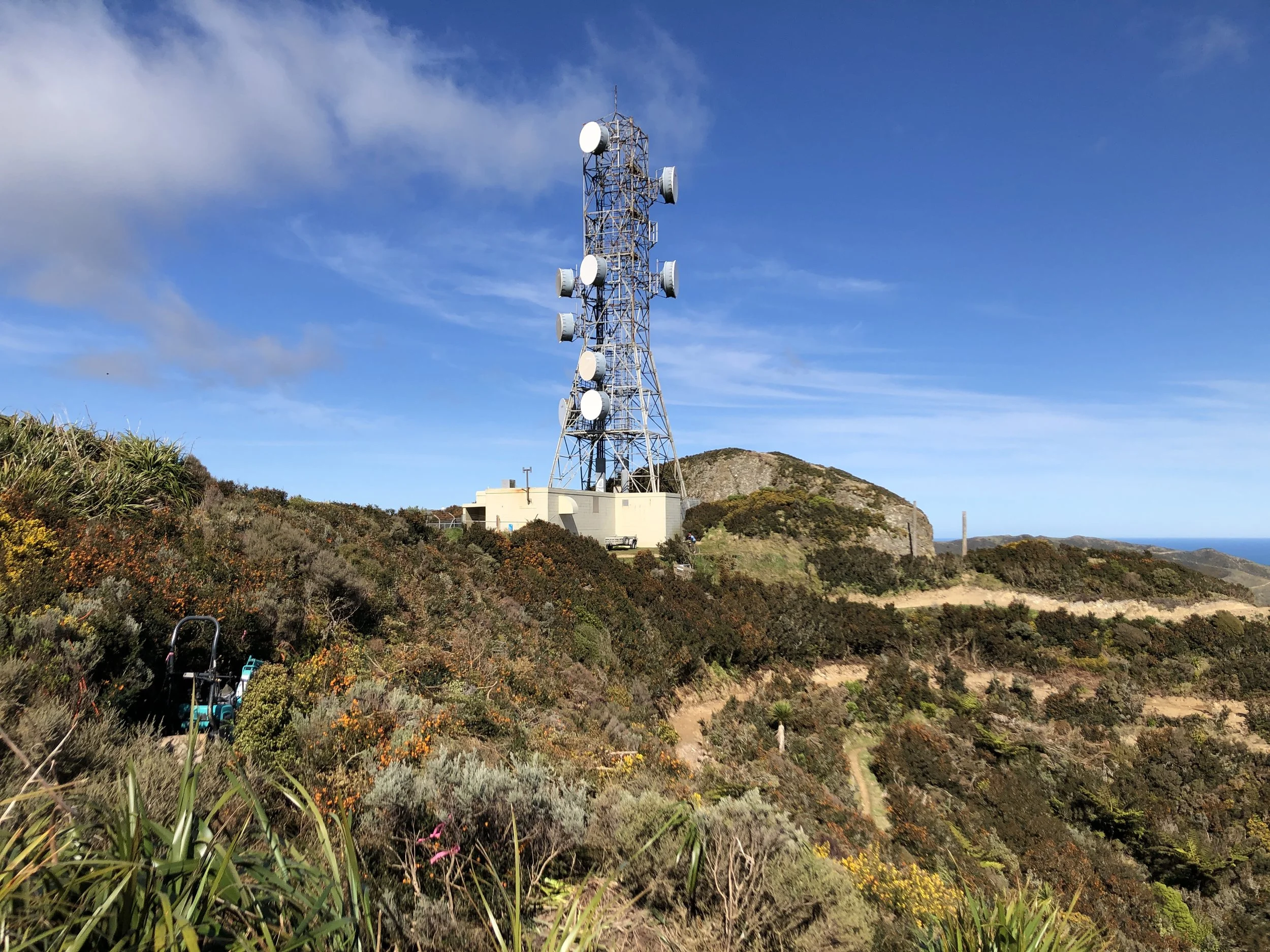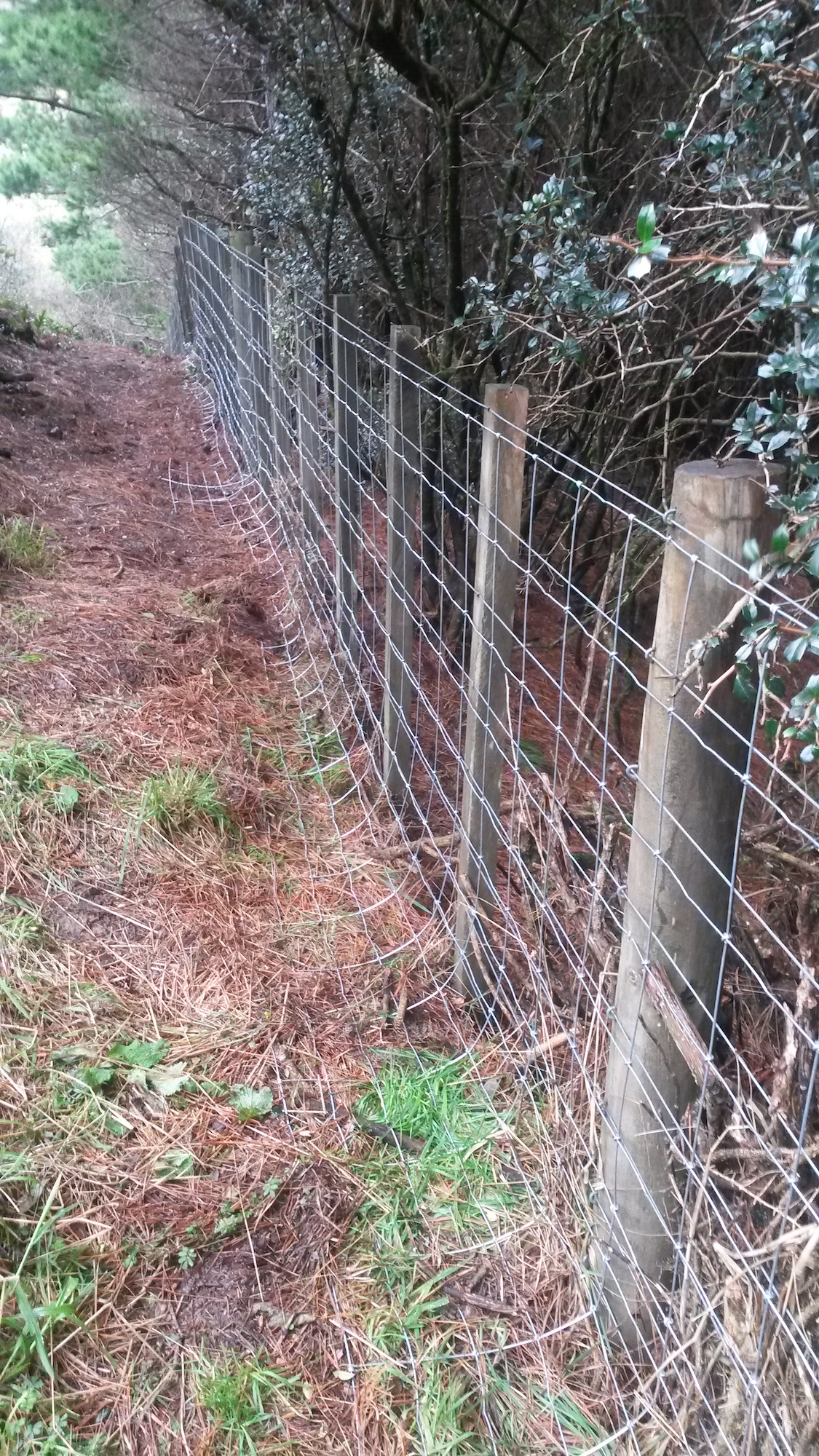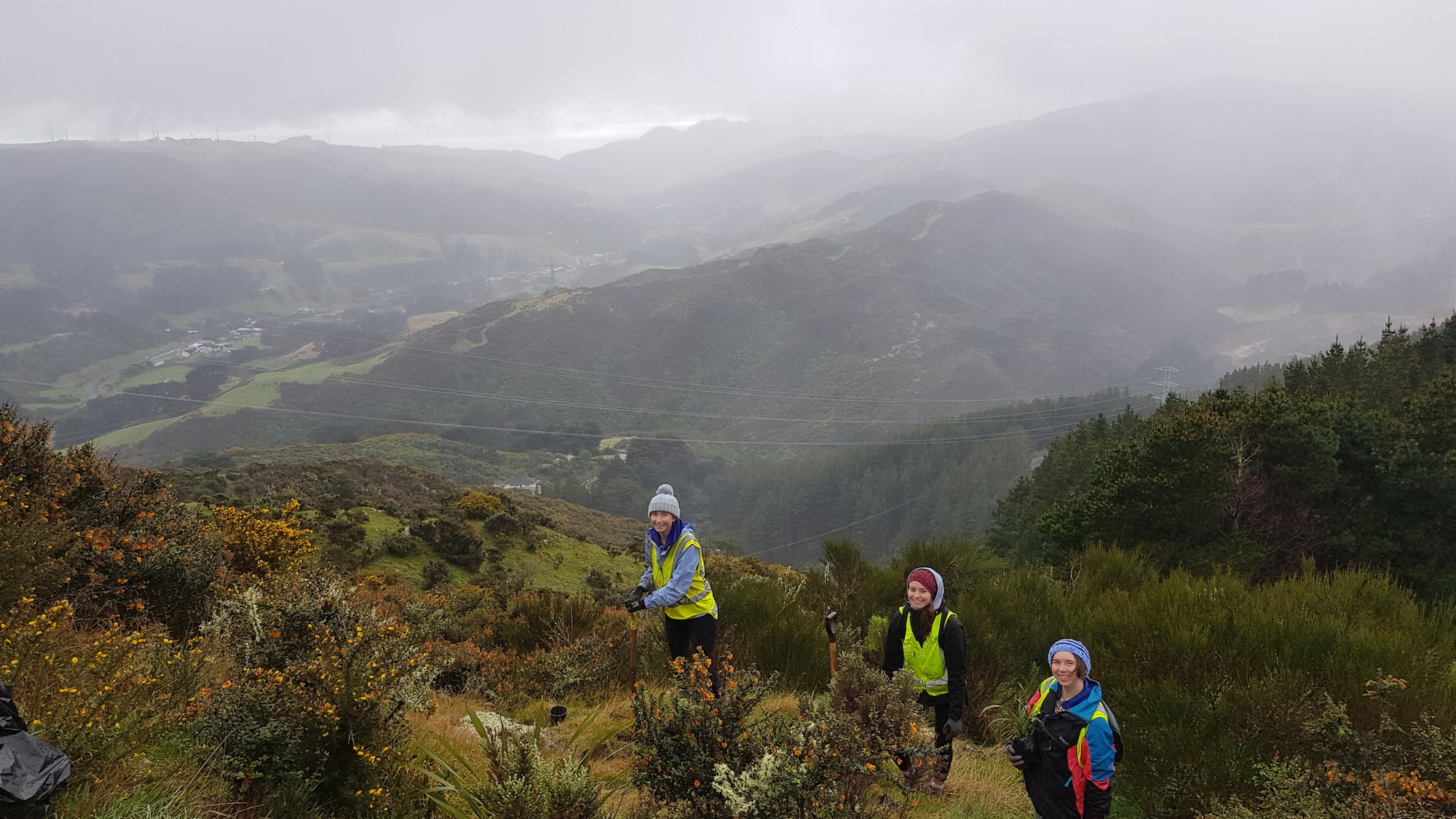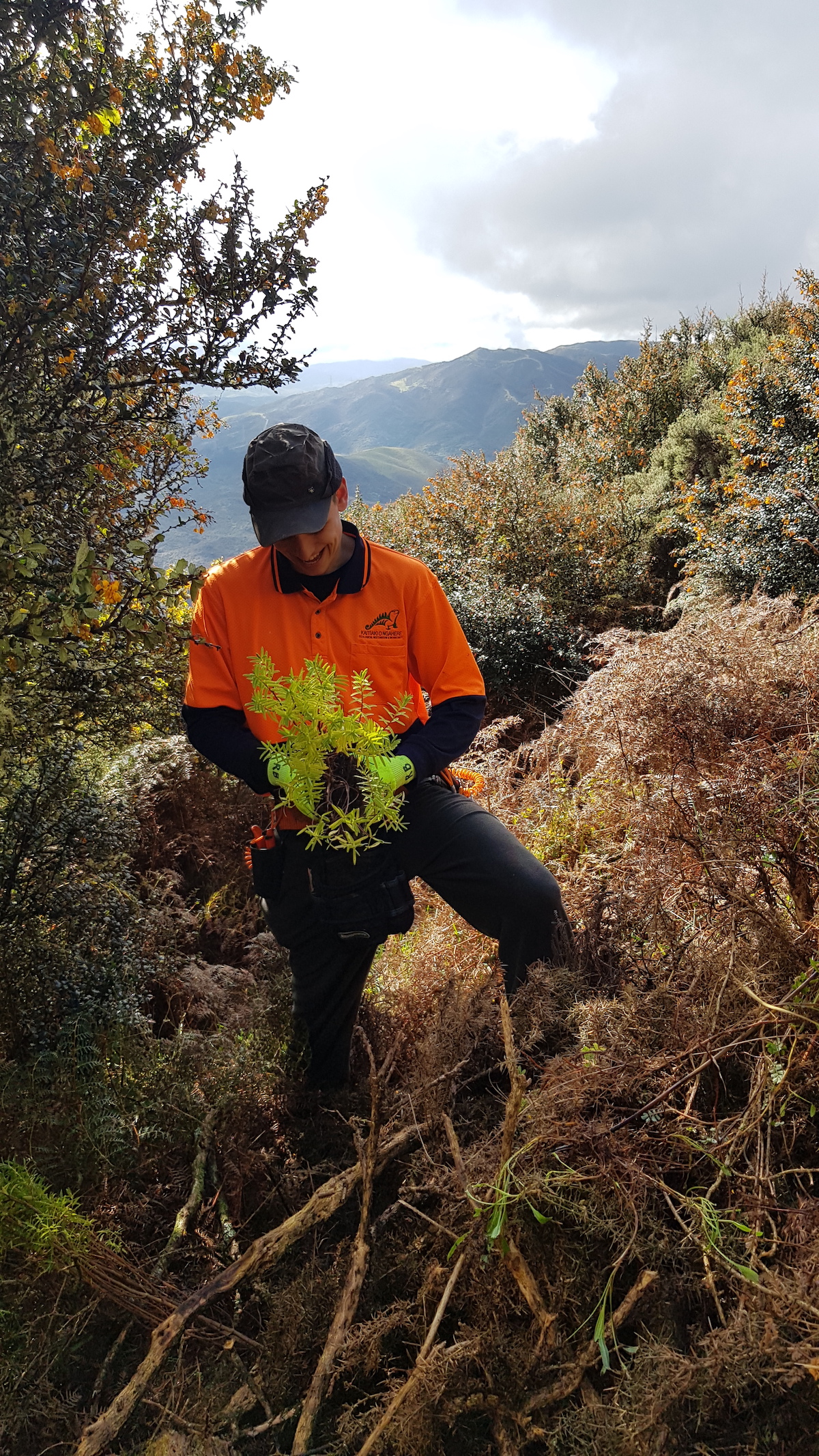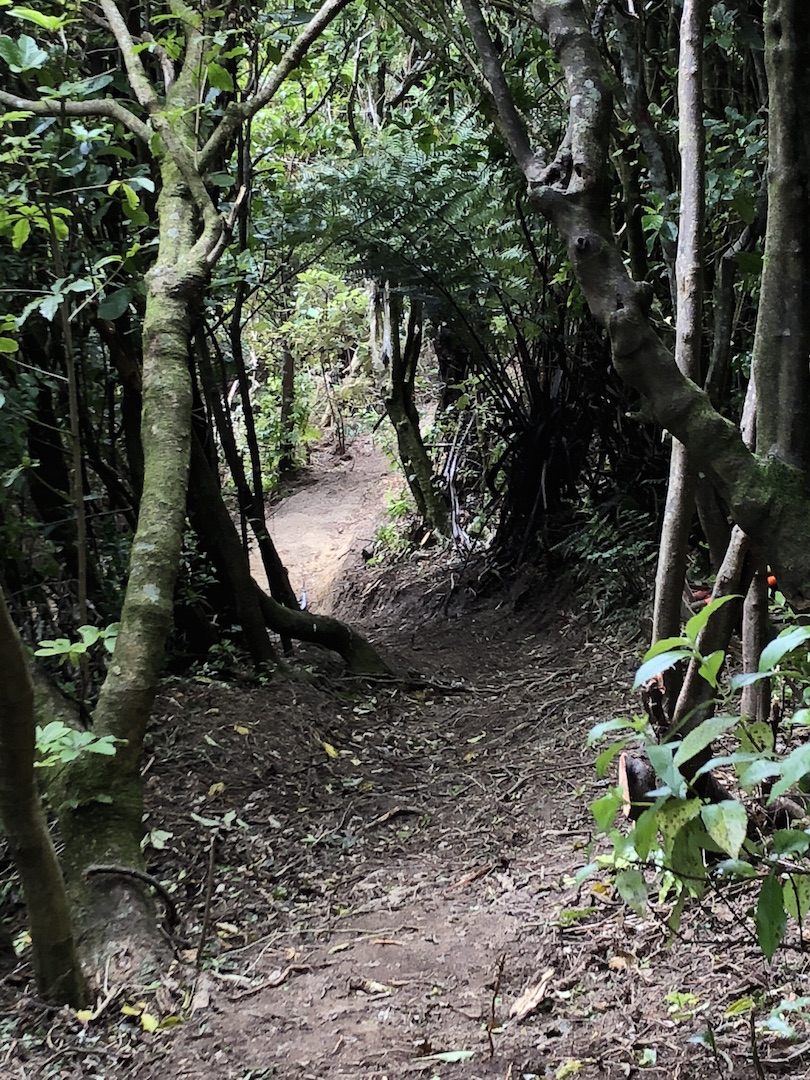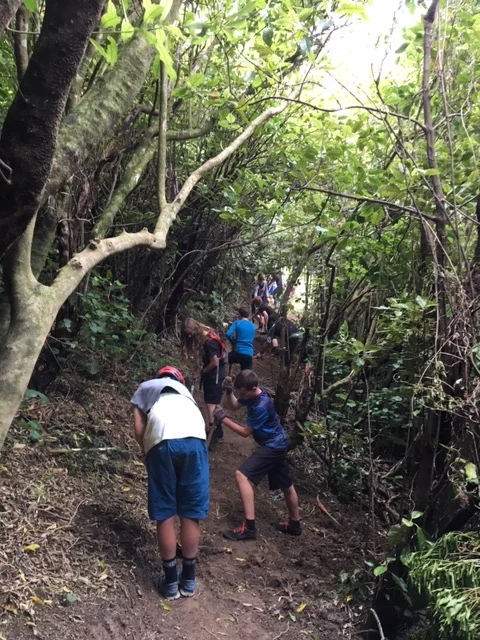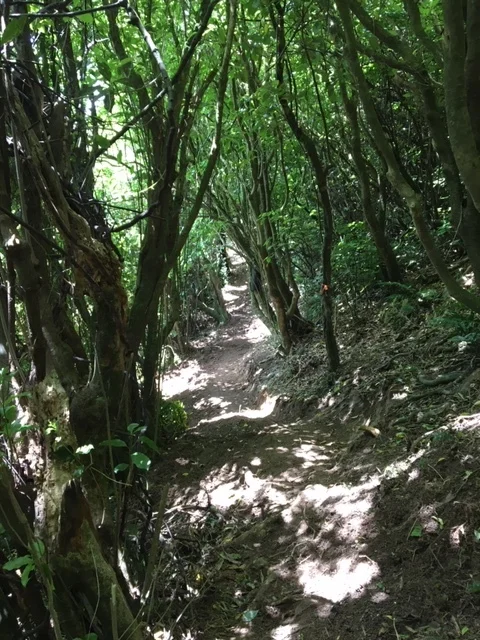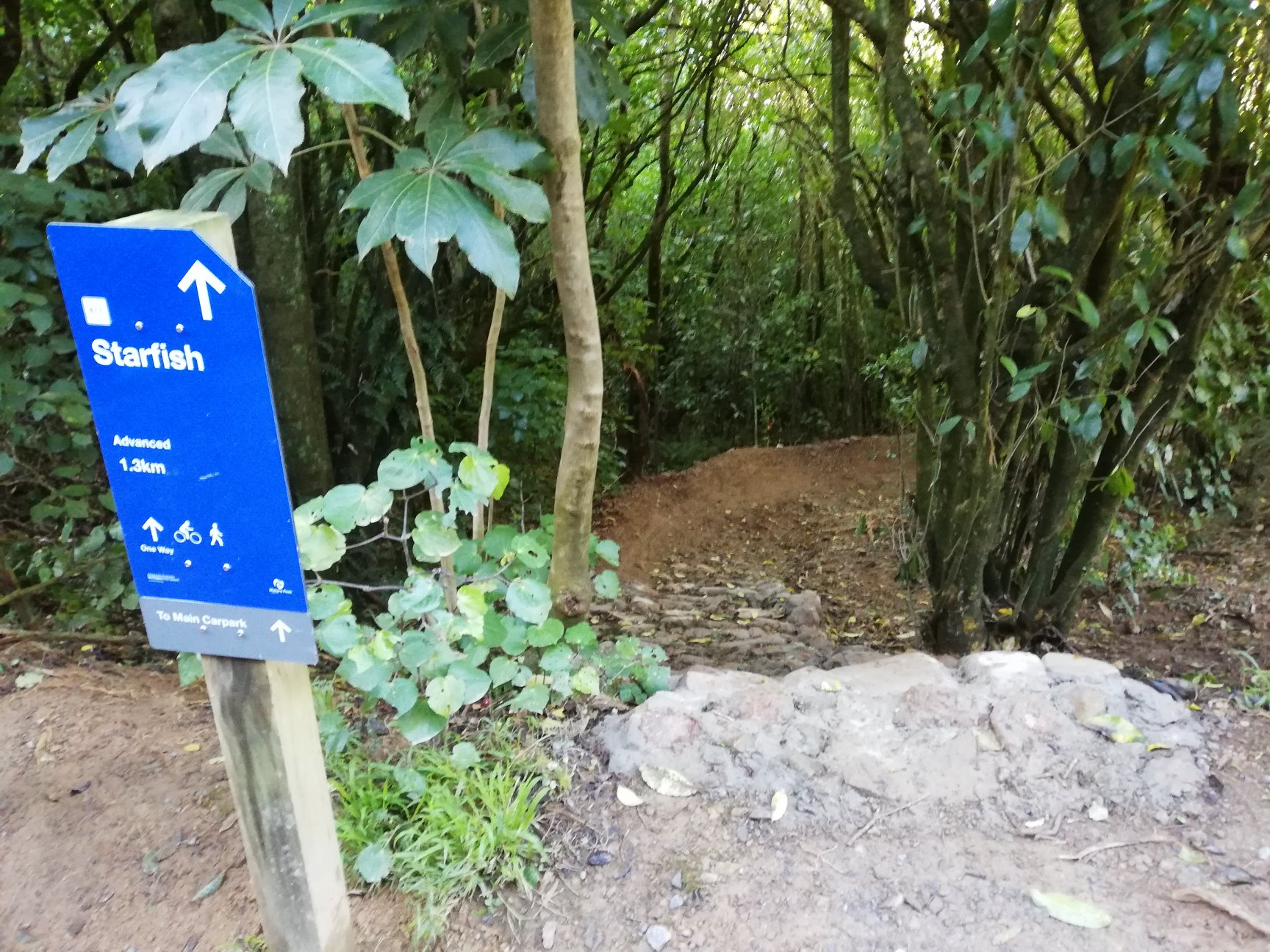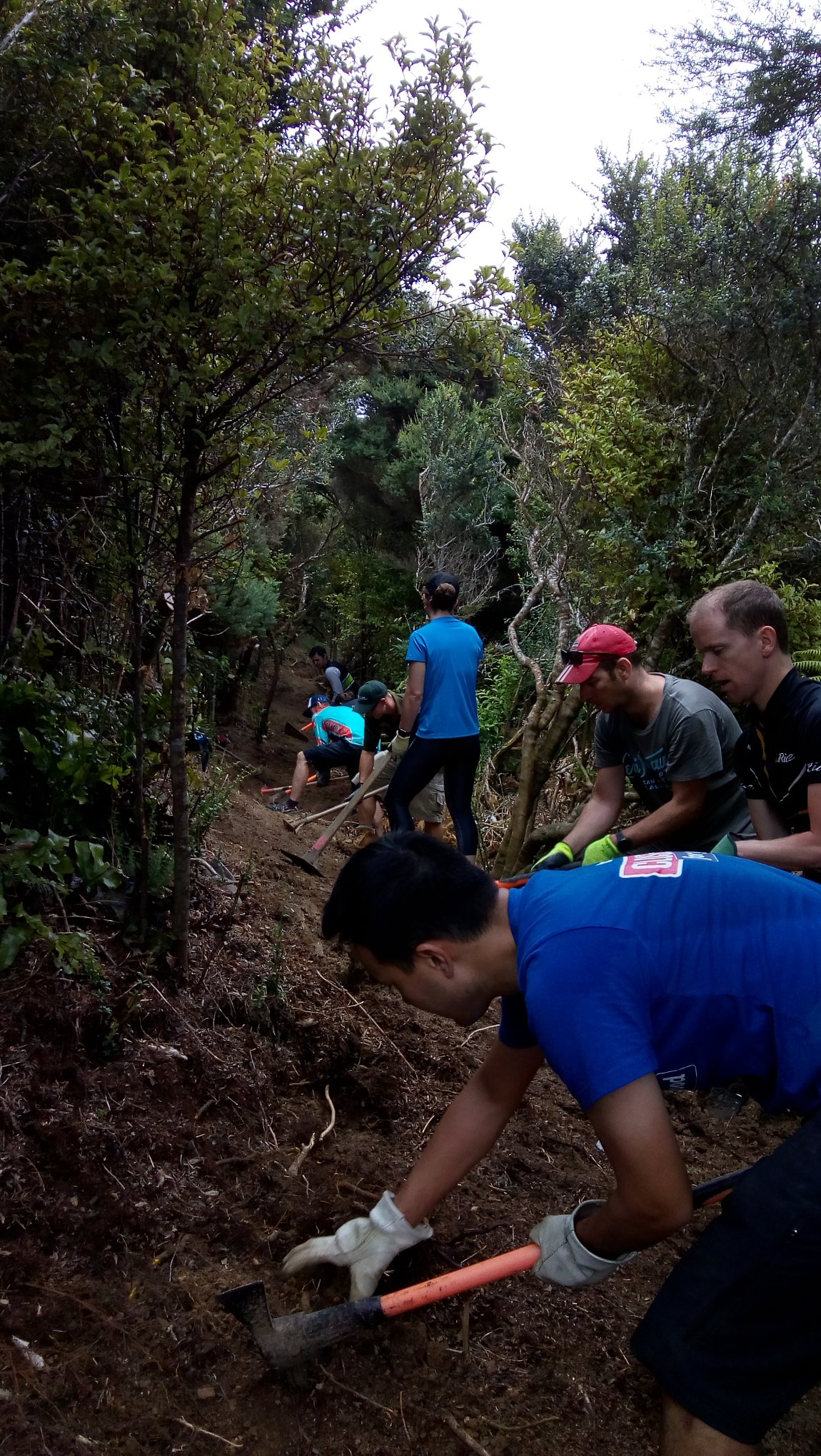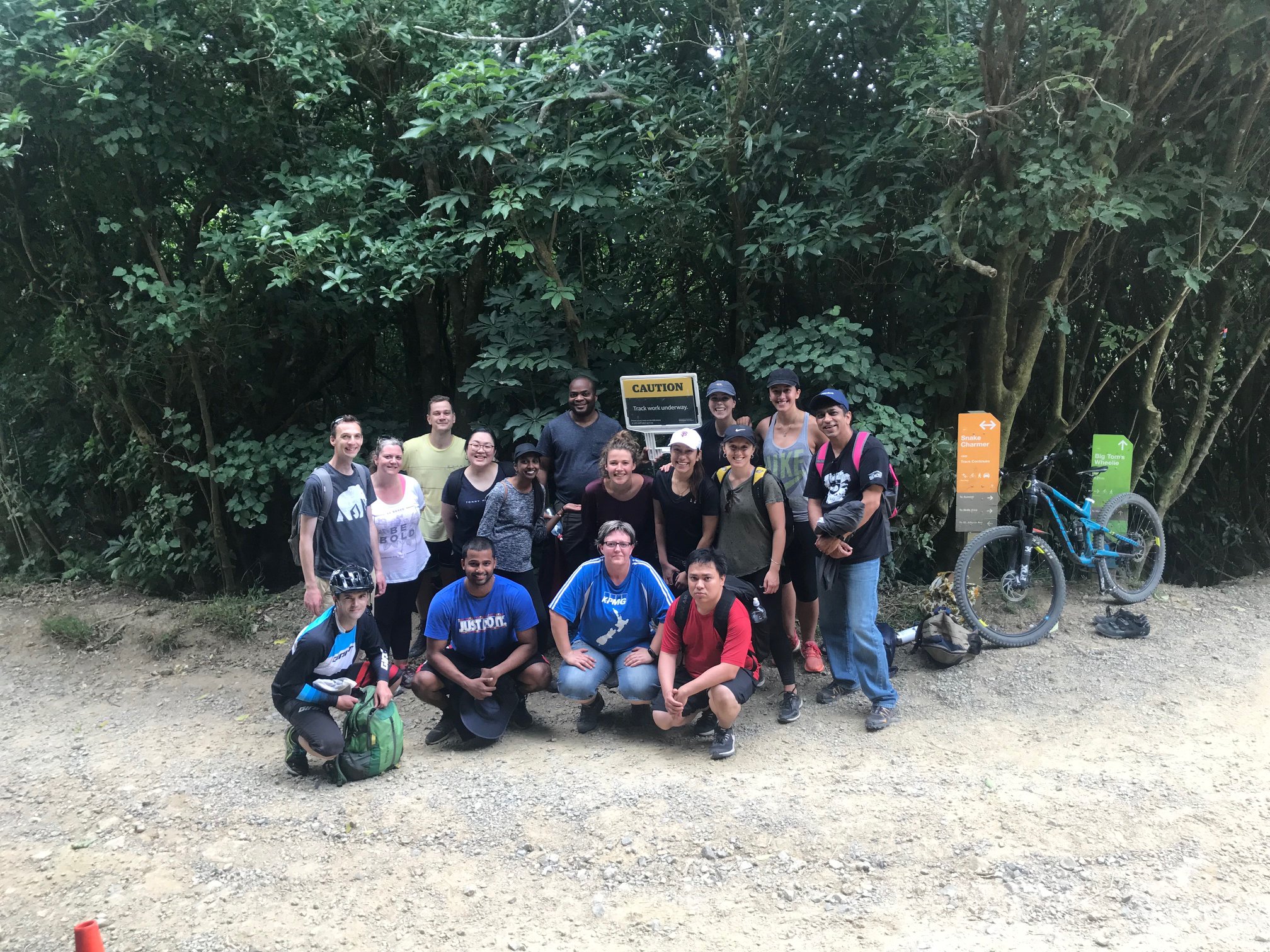Chair’s report
Later this year we celebrate the 20th anniversary of the establishment of Makara Peak Mountain Bike Park. The vision remains to create a world class mountain bike park in a regenerating native forest.
Given the inhospitable terrain for both growing trees and building bike tracks it was an ambitious goal when first thought up, but fast forward a mere two decades and we have:
1000 future “forest giants” established and between 1.5 and 6 metres tall– increasingly these trees are fruiting and seeding throughout the park;
A volunteer pest control program which allows a variety of native fauna to re-establish itself in the park;
100,000 sets of tires pass our tracks counters each year(as well as walkers and runners) and enjoying 50km’s of sweet single track.
Thanks
On behalf of everyone who is now enjoying the fruits of your hard work, I’d like to say an enormous thank you to everyone who’s contributed to the park over the last twenty years. The success of the park is due to a massive amount of time and effort put in by volunteers who donate their spare time to making a better park for everyone. Thank you.
We continue to have a great partnership with Wellington City Council, thanks in particular to Adam Groenewegen, Tim Harkness, Steven Peters, Illona Keenan, Anita Benbrook and Dave Halliday .
There is a core group of dedicated volunteers who deserve special mention and thanks:
2018/19 Management Committee
Iain Feist (Chair), Andrew Cooper, Mark Kent, Peter Leman, Ricky Pincott, Simon O’Brien (Secretary), Stewart Glynn (Treasurer)
Tracks sub-committee
Mark Kent (Lead), Andrew Cooper, Ricky Pincott, Simon Kennett, Simon O’Brien, Tom Moore
Conservation sub-committee
Peter Leman (Lead), Andrew McLellan, Evan McCarney, Simon Kennett
Trapping and bait line team:
Norm Thornley, Anne Thornley, Susan Hutchinson, Janet and Martin Toland, Evan McCarney, Andrew McLellan, Dave Rudge, Barryn Weston, Mike Pratt, Euan Galloway, Sarah Bramwell, Andy Foster, Kirsten Haupt, Simon Greenway, Anna Grant, Nick Kalasih, Dave Nendick, Peter Leman, Ian Clarke, Helen Clarke, Paul Bishop, Clare Odell, Kim Tottenham, Gareth Alley, Liz Smit, Ellen Mary Pullar, Jon Lyall, Gillian McIlraith, Matt Dwyer, Sam Eccles, Sharleen Price, Sid Jones, Holly Neill, Liz Hooks, Peter Williams, Brent and Nicole Hoy, Anna Lambrechtse, Jeremy Lang, Bronwen Wall, Paul Watson, Maurice Marquardt, Sarah Drake, Patrick Butler, Mark Stephen, John Cuthbert, Simon Kennett.
Thanks also to our “go to” contractors – TGL Construction, La Plodge, Kaitiaki and Peter Russell.
The future of the park
For the next twenty years and beyond we’ll continue to work towards achieving the parks vision. There’s no doubt mountain biking is going to grow and change substantially during that period - you just have to sit at the summit for 30 minutes on a sunny afternoon as streams of people huff and puff up the hill before heading downhill for their shot of adrenalin. And more and more riders are reaching the summit with the help of an e-bike - something the park is already considering as part of the tracks master plan.
The Ecological Management Plan
An ecological management plan has been in place for as long as the park has existed. The first step to re-establishing a forest is figuring out what was there in the first place. The first ecological management plan reviewed the park, historic records and similar remnant forest (mainly Wilton’s bush) to figure out what the area looked like pre-settlement. The park itself is highly varied, from sheltered damp valleys to exposed ridges bearing the brunt of Wellington’s wind. The “missing” species were identified, and a planting plan developed specific to each distinct area. In addition to planting the right trees in the right place, pest control is needed to keep “browsing” to a level that seedlings can survive, and to allow native fauna to become established and grow.
The plan goes as far as considering things like planting to lower the fire risk (a big problem when gorse was the dominant species), leaving dead pines in place to create Kaka habitat, and designing tracks to reduce the sediment impact on streams.
The plan can be read here.
The Tracks Master Plan
We are now entering the third year of the Tracks Master plan (which can be viewed here). We have been reasonably methodical in our approach – completing all the grade 2 tracks first (with the notable exception of Yeah Gnar), focusing on the core grade 3 track network and then moving onto the core grade 4’s to the carpark. Providing grade 3 riders with a fun way to get from the peak to the carpark has opened up a lot of options for things we can do with the grade 4’s. Given the options available, there is no need for our core tracks to try and offer something to everyone.
Next up will be the focus on northern ridge around Zac’s Track and Varley’s – it’s a bit of blank canvass, so watch this space.
The Tracks Master Plan made other key recommendations which we’re working on. First was the redevelopment of the entrance on South Karori Road to be fit for purpose for a regionally significant recreational asset. The Council got this project underway recently and should be completed by the end of the year.
The second was to tell our story to visitors to the park – including the history of the area, the development of the park and conservation progress to date. This work is well underway, and it has been fascinating to see what the project team has been able to pull together.
That ridiculously ambitious vision from 20 years ago is well on its way to becoming a reality, just give it another 20.
Pedal on.
Iain Feist
Chair of the Makara Peak Supporters
Conservation update
Bird survey
We do this every three years using Nikki McArthur from Wildlife Management International Limited. The results since 2006 show a gradual upward trend in the number of native forest birds counted though the increase is not statistically significant. The most common native birds encountered were grey warbler, fantail and silvereye. The bird showing the greatest increase in numbers is the Tui. Overall, the message is that we are doing well and, with the pest control at MPS and at Zealandia close by, are having a positive impact.
Podocarp habitat review
Miro Kennett carried out a review of what conditions help podocarps to thrive, looking at light levels and soil moisture. We’ll be able to use the results to maximise success with planting in future years.
Lizard survey
The survey is set up and ready to go when the weather warms up again. The work done by Transpower over summer and autumn meant we didn’t get a chance to complete the survey in the first half of the year.
Outer Green Belt submission
We took the opportunity to submit to the review on the Outer Green Belt and highlighted our concern over the need for increased weed control, particularly Darwin’s Barberry, Japanese honeysuckle, ivy and African Club Moss, the need for better access from the end of South Karori Rd which does not involve private landowners, control of commercial activities, better dog control and focus on the stream edge.
Kohanga a porokapa
We are developing an area of clear land at the south end of the park (near the last switchback on Lower Leaping Lizard, into an area to be heavily planted with podocarps. Council is strongly supportive and we have applied for funding from the Billion Tree Fund and ANZ. The first planting is about to start with the bulk happening in 2020. The area will also be fenced to stop pig and goat predation.
Ian ‘Zac’ Pearson grant from the Nikau Foundation
We received a generous grant from the Ian ‘Zac’ Pearson Endowment Fund managed by the Nikau Foundation this year which has enabled us to make a good start on the plan for upgrading the track and its environs. The fence has been upgraded to make it goat-proof and we have planted 700 shrubs in areas adjacent to the track. We hope to start work on the track itself in the next 12 months.
Planting
Another 1,800 trees and shrubs have been planted this year by committed and enthusiastic volunteers, led by the knowledgeable Simon Kennett. Some were planted alongside new tracks like the new Starfish, others in-filling holes in other areas. We are on track for our commitment to plant a tree for every metre of new track built.
Pest control
It’s been another busy year keeping rodents, possums and mustelids at bay and we are grateful for the hard work done by a team of volunteers led by Andrew McLellan and Evan McCarney.
Capital Kiwi Collab
We’ve been collaborating with Capital Kiwi - extra traps have been added to our western trap lines.
Thanks
Particular thanks to Ben Swale who has stepped up to co-lead planting sessions and did great job releasing at Trickle Falls and Sarah Bramwell for her usual tireless efforts.
Peter Leman
Supporters Conservation Lead
On behalf of the Conservation Sub Committee and many volunteers
Financial statements
Income
Total income for the year was $54,916, down from $58,360 from 2017/18. The main sources of income were grants ($28,050), sponsorship ($10,223), subscriptions ($7,187) and donations ($4,511).
The decrease in income was primarily due to a reduction in revenue from events and sponsorship, although this was largely offset by an 86% increase in grants. Subscriptions income showed a 2% increase from 2017/18.
Special mention goes to the Nikau Foundation for their substantial grant of $19,800 towards the northern end of the park around Zac’s Track, and to Wellington International Airport Limited for continuing their generous naming rights sponsorship for the Wild At Heart suspension bridge ($10,000).
Expenses
Total expenditure for the year was $50,867, an increase of $17,856 from 2017/18. Contractors were the biggest expense for the Supporters, with $26,065 spent on a wide variety of track building and maintenance. This was an increase of almost 100% over 2017/18. After contractors, the next highest items of expenditure were conservation and pest control ($11,196) and depreciation ($4,294).
Overall
As at 30 June 2019, the Supporters had total cash reserves of $96,012. We are in a strong financial position to progress with key initiatives planned for the year ahead.
Stewart Glynn
Supporters Treasurer
Tracks update
It’s been a fantastic year for trail development in the park with the ever-growing support from the biking and local community, the Wellington City Council and contractors, who all contribute to the continued growth of the Makara Peak trail network.
There’s been a big increase of riders in the park over the past year, with many family groups and new riders taking advantage of the beginner loop created by Magic Carpet, Rimu and Miro.
It’s also great to see more riders testing their skills and comfort levels on the second section of the recently extended Starfish. Six hundred metres of new track was built by the volunteers coordinated by the Supporters over Summer and Autumn to link Ridgeline Extension to the existing Starfish, including a rock garden at the lower entrance off Snakecharmer.
It was built off the back of a heap of volunteer grunt and dedication and is proving to be a great challenge judging by the number of riders eyeing it up before dropping in.
We had strong turn out at most of the digs - thanks to everyone who dropped by or stopped mid-ride - even for 15 minutes makes a difference. And it was particularly pleasing to see lots of kids coming along with their parents - the next generation of riders being indoctrinated into the world of digging and riding. Great to see.
TGL did what they do best and carved an amazing extension to SWIGG which now flows all the way down to the main entrance. The berms are outstanding, and it's hard to believe that it was build by digger given how close some the trees are. Watch your head!
These trails have added approximately 1000 metres of trail to the parks impressive trail network. But more importantly some much needed variety and gravity defying fun on the decent to the park’s entrance.
With the parks ever growing popularity - highlighted by the recently installed track counters at the parks entrances - trail maintenance is always on our radar. With the support of the WCC there has been some great mahi done over the last year to ensure that the trail surfaces are kept in top condition and structures are maintained and replaced as needed.
The year ahead is already looking exciting. Work is underway on a short new climbing trail which will take out the blustery and boring section of 4WD when you exit Aratihi to get to the summit.
We’ll be focussing our efforts on the northern end of the park this year - upgrades to Zac’s track, a new climb incorporating sections of T3 is due to start in October, North Face will be getting some love, and the Supporters will be tweaking and refining the new Starfish build to make sure it’s running perfectly for summer. And we’re starting to look at a link from the bottom of North Face to Starfish.
Oh, and did we mention we’re upgrading the skills area? Watch this space! More exciting projects that will enhance the visitor experience to Makara Peak.
Mark Kent
Supporters Tracks Lead
